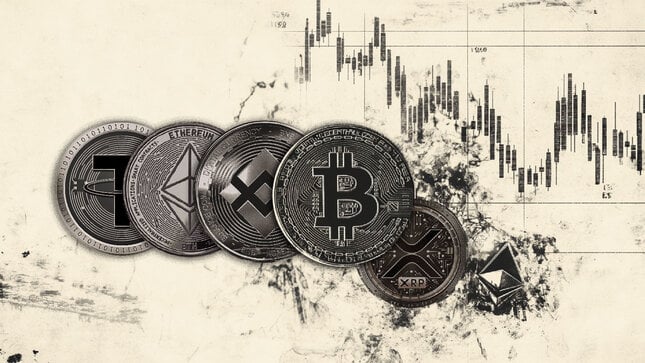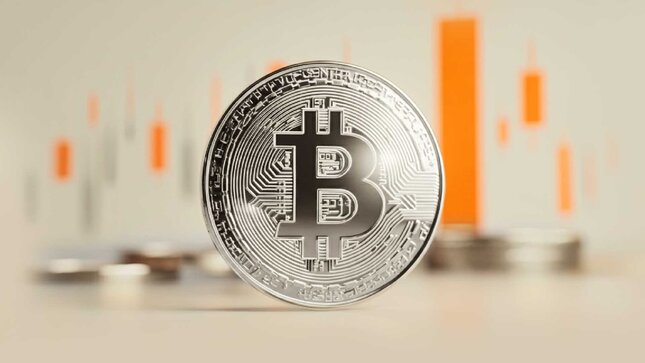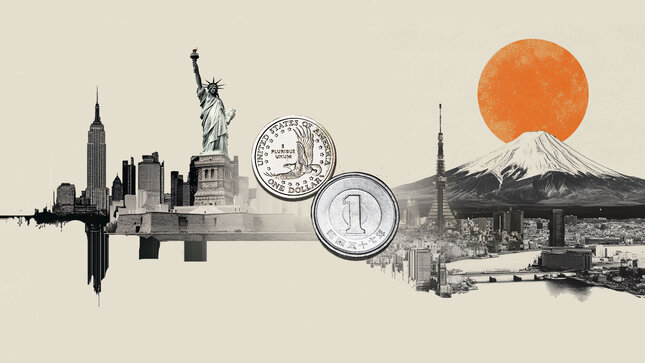In a significant move aimed at leveling the playing field for small investors, the Securities and Exchange Commission (SEC) recently voted to implement the most sweeping changes to U.S. stock market rules since the mid-2000s. These new regulations target two primary areas: tick size reduction and access fee cap reduction.
The SEC's actions signal a commitment to promoting fairness and transparency in the markets, ultimately benefiting individual investors through increased competition for their orders. This is anticipated to lead to lower trading costs and the best possible prices. Furthermore, these changes aim to create a more balanced competitive landscape between traditional exchanges and the less regulated "dark pools" that have proliferated with the rise of electronic trading.
The impact of these new rules on traders and exchanges is likely to be significant and will be closely watched until the rule change comes into effect in November 2025. Let’s take a closer look.
What has the SEC approved?
Tick size reduction
The SEC has implemented a two-tiered system for the minimum price increment, or "tick size," at which stocks can be quoted. While some stocks will retain the traditional 1-cent tick, thousands of others – those with bid-ask spreads frequently hovering around 1 cent – will see their minimum price increment halved to $0.005 or sub-penny increments.This is projected to impact an estimated 1,788 stocks based on how they were traded last year, according to the SEC.
A tick represents the basic unit of measurement for price movements in the market (upward or downward). It serves as a standardized way to track and compare price changes across different stocks or price differences for the same stocks on different exchanges. Because they allow for potentially more precise pricing and better market efficiency, ticks also enable traders to optimize their trading.
Evolution of tick sizes in the US
For a significant part of the 19th and 20th centuries, U.S. stocks were quoted in fractions of a dollar. It was therefore common to see prices in increments of one-eighth of a dollar (12.5 cents).
In 1997, major exchanges like the NYSE and Nasdaq transitioned to increments of one-sixteenth of a dollar (6.25 cents),often referred to as "teenies" by traders.
A major shift happened in 2001 when the SEC mandated that all stock markets switch to decimal pricing through what was called "decimalization." This meant prices were now quoted in dollars and cents, making them easier to understand and compare. Since then, the standard tick size when trading stocks above $1 has been one cent.
What could this change bring?
Smaller tick sizes translate to narrower bid-ask spreads (the difference between buying and selling prices), directly reducing trading costs for investors. Tighter spreads mean less money is spent when buying or selling stocks, effectively boosting investor returns, especially for those making smaller trades.
Access fee cap reduction
The SEC is taking a hard look at the "maker-taker" fee structure prevalent in U.S. stock markets. In this model, exchanges incentivize market participants to provide liquidity (i.e., "make" the market) by offering them rebates, while those who take liquidity (i.e., execute trades against existing orders) are charged a fee.
Concerns have arisen that this system can be exploited by high-frequency traders, leading to potential market distortions,reduced liquidity, and ultimately, higher costs for long-term investors. The SEC is particularly scrutinizing the practice of exchanges offering sizable rebates, which critics argue can incentivize certain behaviors that are detrimental to overall market health.
To address these concerns, the SEC is slashing transaction fees. The maximum fee exchanges can charge brokers for executing trades has been drastically cut from 30 cents to 10 cents per 100 shares.
What could this change bring?
The reduction in transaction fees directly translates to lower costs for investors, allowing them to keep more of their investment gains. Additionally, by curbing potential abuses of the maker-taker model and aligning access fees with the new tick size structure, the SEC aims to promote a more equitable and transparent market environment. Finally, increased oversight of high-frequency trading practices and the potential adjustments to access fees can help mitigate the risk of market manipulation, fostering greater confidence among investors.
CFDs are complex instruments and come with a high risk of losing money rapidly due to leverage. 66-79% of retail investor accounts lose money when trading CFDs with this provider. You should consider whether you understand how CFDs work and whether you can afford to take the high risk of losing your money. ActivTrades PLC is authorized and regulated by the Financial Conduct Authority, registration number 434413. ActivTradesPLC is a company registered in England &Wales, registration number 05367727. ActivTrades Corp is authorized and regulated by The Securities Commission of the Bahamas. ActivTrades Corp is an international business company registered in the Commonwealth of the Bahamas, registration number 199667 B. ActivTrades Corp is a subsidiary of ActivTrades PLC. ActivTrades Europe SA, Public Limited Company, is authorized and regulated by the Commission de Surveillance du Secteur Financier (CSSF) in Luxembourg. ActivTrades Europe SA is a company registered in Luxembourg, registration number B232167. ActivTrades Europe SA is a subsidiary of ActivTrades PLC.
Editors’ Picks

EUR/USD struggles to extend advance above 1.1800
The EUR/USD pair posts a fresh weekly low near 1.1740 during the Asian trading session on Wednesday. The major currency pair is under pressure as the US Dollar edges higher despite Federal Open Market Committee minutes of the December policy meeting, released on Tuesday, showing that most policymakers stressed the need for further interest rate cuts.

GBP/USD tests 1.3450 support after moving below nine-day EMA
GBP/USD remains subdued for the second consecutive day, trading around 1.3460 during the Asian hours on Wednesday. The technical analysis of the daily chart indicates a weakening of a bullish bias as the pair is positioned slightly below the lower boundary of the ascending channel pattern.

Gold jumps on US rate cut prospects, safe-haven demand
Gold price extends the rally above $4,350 during the early European trading hours on Wednesday. Gold's price has surged about 65% this year and is set to record its biggest annual gains since 1979. The rally in the precious metal is bolstered by the prospect of further US interest rate cuts in 2026. Lower interest rates could reduce the opportunity cost of holding Gold, supporting the non-yielding precious metal.

Bitcoin, Ethereum and XRP prepare for a potential New Year rebound
Bitcoin, Ethereum, and Ripple are holding steady on Wednesday after recording minor gains on the previous day. Technically, Bitcoin could extend gains within a triangle pattern while Ethereum and Ripple face critical overhead resistance.

Bitcoin Price Annual Forecast: BTC holds long-term bullish structure heading into 2026
Bitcoin (BTC) is wrapping up 2025 as one of its most eventful years, defined by unprecedented institutional participation, major regulatory developments, and extreme price volatility.
RECOMMENDED LESSONS
Making money in forex is easy if you know how the bankers trade!
I’m often mystified in my educational forex articles why so many traders struggle to make consistent money out of forex trading. The answer has more to do with what they don’t know than what they do know. After working in investment banks for 20 years many of which were as a Chief trader its second knowledge how to extract cash out of the market.
5 Forex News Events You Need To Know
In the fast moving world of currency markets where huge moves can seemingly come from nowhere, it is extremely important for new traders to learn about the various economic indicators and forex news events and releases that shape the markets. Indeed, quickly getting a handle on which data to look out for, what it means, and how to trade it can see new traders quickly become far more profitable and sets up the road to long term success.
Top 10 Chart Patterns Every Trader Should Know
Chart patterns are one of the most effective trading tools for a trader. They are pure price-action, and form on the basis of underlying buying and selling pressure. Chart patterns have a proven track-record, and traders use them to identify continuation or reversal signals, to open positions and identify price targets.
7 Ways to Avoid Forex Scams
The forex industry is recently seeing more and more scams. Here are 7 ways to avoid losing your money in such scams: Forex scams are becoming frequent. Michael Greenberg reports on luxurious expenses, including a submarine bought from the money taken from forex traders. Here’s another report of a forex fraud. So, how can we avoid falling in such forex scams?
What Are the 10 Fatal Mistakes Traders Make
Trading is exciting. Trading is hard. Trading is extremely hard. Some say that it takes more than 10,000 hours to master. Others believe that trading is the way to quick riches. They might be both wrong. What is important to know that no matter how experienced you are, mistakes will be part of the trading process.
The challenge: Timing the market and trader psychology
Successful trading often comes down to timing – entering and exiting trades at the right moments. Yet timing the market is notoriously difficult, largely because human psychology can derail even the best plans. Two powerful emotions in particular – fear and greed – tend to drive trading decisions off course.
